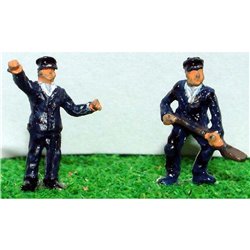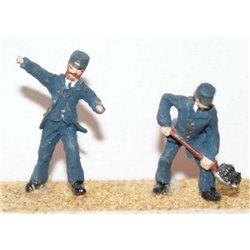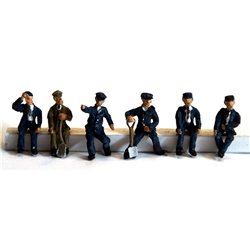Glaze and gloss are both terms used in the world of finishes and coatings, but they have different meanings and...
No products
Product successfully added to your shopping cart
There are 0 items in your cart. There is 1 item in your cart.
Search Tips
Christmas and New Year
We are dispatching orders every weekday apart from Christmas Day, Boxing Day and New Year's Day.
If you order is time critical, select next day delivery at checkout.
The shop in Sandown is closed from 25th December, reopening on 30th December.
How many crew did a steam locomotive generally carry?
The number of crew members on a steam locomotive generally depended on the specific type and size of the locomotive, as well as the operational requirements. A steam locomotive typically carried a crew consisting of a driver (also known as an engineer or locomotive driver) and a fireman.
The driver was responsible for controlling the operation of the locomotive, including controlling the speed, brakes, and other essential functions. The fireman, located in the cab of the locomotive, was tasked with tending to the firebox and ensuring the locomotive had a steady supply of fuel, usually coal or wood, to produce steam.
In certain circumstances, especially for larger locomotives or during more demanding operations, an additional crew member known as a second fireman or a cleaner might be present. The second fireman would assist the fireman in maintaining the fire, shovelling coal and performing other duties related to the locomotive's firebox.
It's worth noting that the crew size could vary depending on the specific railway company, the era in question and the particular requirements of the railway. Some smaller locomotives, such as narrow-gauge or industrial models, might have operated with just one crew member, assuming both the driver and fireman roles.
When recreating steam locomotives in model form, enthusiasts often include the appropriate crew figures to add realism to their layouts. These figures can be placed in the locomotive's cab or positioned near the locomotive during maintenance or other activities, enhancing the overall visual appeal and capturing the atmosphere of steam-era railway operations.
Click here to receive the tips weekly in your mailbox. You can unsubscribe at any time.










